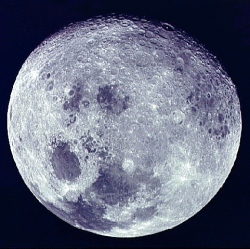
Golden Spike has detailed plans for a lunar return using existing assets. The recent successful Spacex flights are improving the viability of Golden Spike and its plans to return to the moon before 2020.
Golden Spike estimates that they could repeat Apollo 11 for about $6.4 billion and make repeated manned trips to the moon for about $1.5 billion for each trip.
India might want to send manned missions to the moon. They have sent robotic missions to the moon and Mars
In 2004, When President Bush established his new space exploration policy to return humans to the moon, NASA estimated the policy would cost $230 billion (in 2004 dollars) through 2025. This figure includes the Commercial Crew and Cargo program, which is separate from the Constellation program. NASA has estimated that the Constellation program would cost over $97 billion (in 2008 dollars) through 2020, half of which would be for Ares I and Orion.
The Apollo program cost $24 billion in 1969 dollars which is about $150 billion today.
The Golden Spike Company is intent on achieving affordable, reliable, and frequent human expeditions to the Moon. Their space expeditions will be marketed and sold to governmental agencies, companies, and individuals in the United States and around the world—for science, for commerce, for tourism, for entertainment engagement, and for education.
Golden Spike will monetize these expeditions through:
Expedition sales
Public participation/membership in expeditions
Media rights, brand licensing, and expedition advertising sales
Expedition naming rights and merchandising
Sales of items flown
Sales of returned samples and expeditions artifacts
Entertainment products that market each expedition
The capability exists today for human return to the moon for many purposes, and at costs more than an order of magnitude lower than those estimated for NASA’s now cancelled project Constellation. Although new developments are required to enhance current/ in-development launcher performance and Dragon performance and to create a lunar lander, the scale, complexity, risks, and costs of such developments are far lower than starting from scratch to develop all new launch vehicles, a dedicated crew capsule, and landers with extensive capabilities not needed for simple early-Apollo-class sortie missions.
Interim lunar flyby and orbital missions offer the possibility of beginning lunar operations before completing development of the lander and surface suits, thereby easing the funding required before revenue return can begin.
